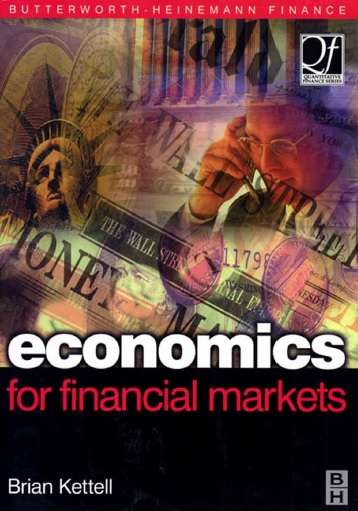This book is about what aspects of economics it is necessary to know about to understand why financial markets are so volatile. It is designed to demonstrate that behind all the jargon associated with the financial markets there are some basic economic ideas operating. What these basic ideas are is not evident from either existing textbooks nor from reading the financial press. The text is not designed as a standard economics textbook as the market place is full of excellent textbooks for anyone seeking to understand basic economic ideas. Prior to the publication of this text readers seeking to understand how the economics world and the real financial market place interact have had a problem. The financial markets are unundated with information. From all this information how can one make sense of this to see the big financial market picture? Certainly not by reading standard economics textbooks. The text is designed for a broad readership including students, both undergraduate or postgraduate majoring in economics of finance, practitioners in the markets seeking a fresh insight into what is going on around them every day, and for newcomers to the financial markets who need a clear perspective on all the daily ups and downs in the markets. To repeat, these objectives are not achieved by reading the existing literature. The text takes the US economy as its frame of reference. This is based on the fact that the sheer size of the US economy in the world financial markets is so large that it dwarfs most other financial market places. Also the domination of the US dollar as the world’s global currency means that what moves the dollarbasically moves all the other financial markets, and clearly whatever can move the value of the dollar has to be understood. However the text is just as relevant to readers operating in other financial markets, as once they understand the economic implications of changes in the US financial market place they can easily see the implications for their own domestic economy.
چکیده فارسی
این کتاب در مورد چه جنبه هایی از اقتصاد ضروری است بدانید که چرا بازارهای مالی چنین هستند فرار. این طراحی شده است تا نشان دهد که پشت همه اصطلاحات است در ارتباط با بازارهای مالی برخی اساسی وجود دارد ایده های اقتصادی در حال اجرا آنچه این ایده های اساسی هستند، نیستند از کتب درسی موجود و یا از خواندن آنها مشهود است مطبوعات مالی متن به صورت استاندارد طراحی نشده است کتاب درسی اقتصاد به عنوان محل بازار پر از عالی است کتاب های درسی برای هر کسی که به دنبال درک اصول اقتصادی است ایده ها. قبل از انتشار این متن خوانندگان به دنبال درک چگونه دنیای اقتصاد و مالی واقعی است تعامل در بازار مشکل داشته است. مالی بازارها فاقد اطلاعات هستند. از تمام این اطلاعات چگونه می توان این را برای دیدن مسائل مالی بزرگ معنا کرد عکس بازار؟ البته نه با خواندن اقتصاد استاندارد کتاب های درسی متن برای خوانندگان گسترده ای از جمله دانش آموزان طراحی شده است، چه در مقطع کارشناسی و چه در مقطع کارشناسی ارشد در رشته اقتصاد از امور مالی، شاغلین در بازارها به دنبال یک تازه بینش نسبت به آنچه که هر روز در اطراف آنها می گذرد و برای تازه واردان به بازارهای مالی که به چشم اندازی روشن نیاز دارند در تمام فراز و نشیب های روزانه در بازارها. برای تکرار، این اهداف با خواندن مطالب موجود محقق نمی شوند ادبیات. متن، اقتصاد ایالات متحده را به عنوان چارچوب مرجع خود در نظر گرفته است. این مبتنی بر این واقعیت است که اندازه بزرگ اقتصاد ایالات متحده در بازارهای مالی جهان به قدری بزرگ است که از سایر بازارها کوتوله می شود مکان های بازار مالی همچنین تسلط دلار آمریکا به عنوان پول جهانی جهان به این معنی است که آنچه دلار را به حرکت در می آورد اساساً تمام بازارهای مالی دیگر را به حرکت در می آورد و به وضوح هر چیزی که می تواند ارزش دلار را تغییر دهد باید درک شود. با این حال، متن به همان اندازه مربوط به خوانندگانی است که در موارد دیگر فعالیت می کنند بازارهای مالی، به عنوان زمانی که آنها اقتصاد را درک کنند پیامدهای تغییرات در بازار مالی ایالات متحده آنها را نشان می دهد می توانند به راحتی پیامدهای آن را برای خانواده خود ببینند اقتصاد.
ادامه ...
بستن ...
Author(s): Brian Kettell Series: Quantitative finance series Publisher: Butterworth-Heinemann, Year: 2002 ISBN: 0750653841,9780750653848,9781429484299 Pages : 375 Language : English Size : 831 Kb Extension : pdf
ادامه ...
بستن ...










